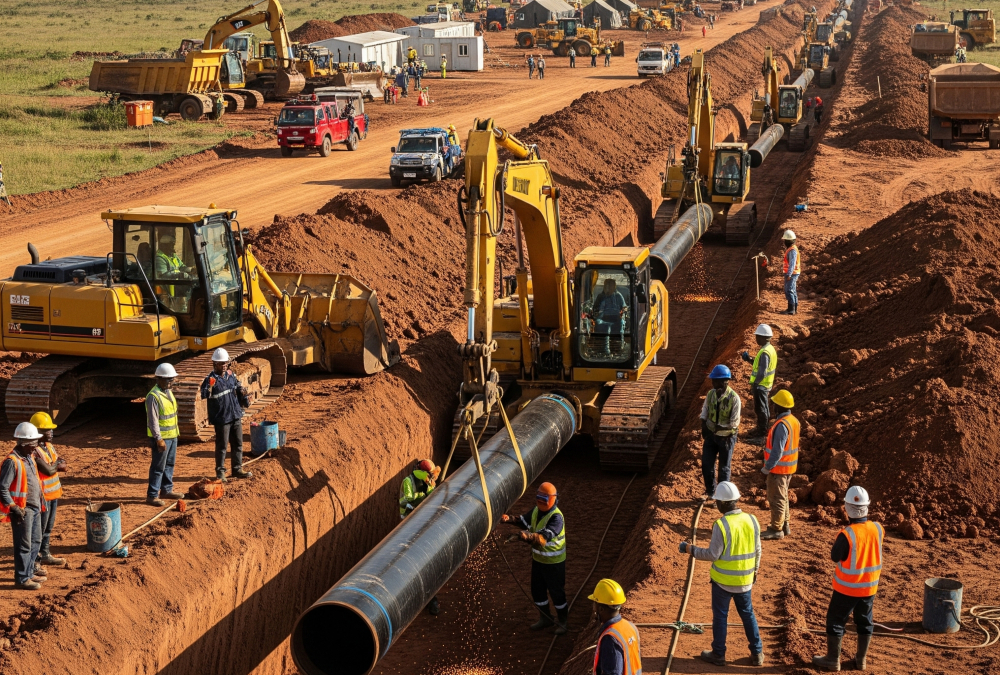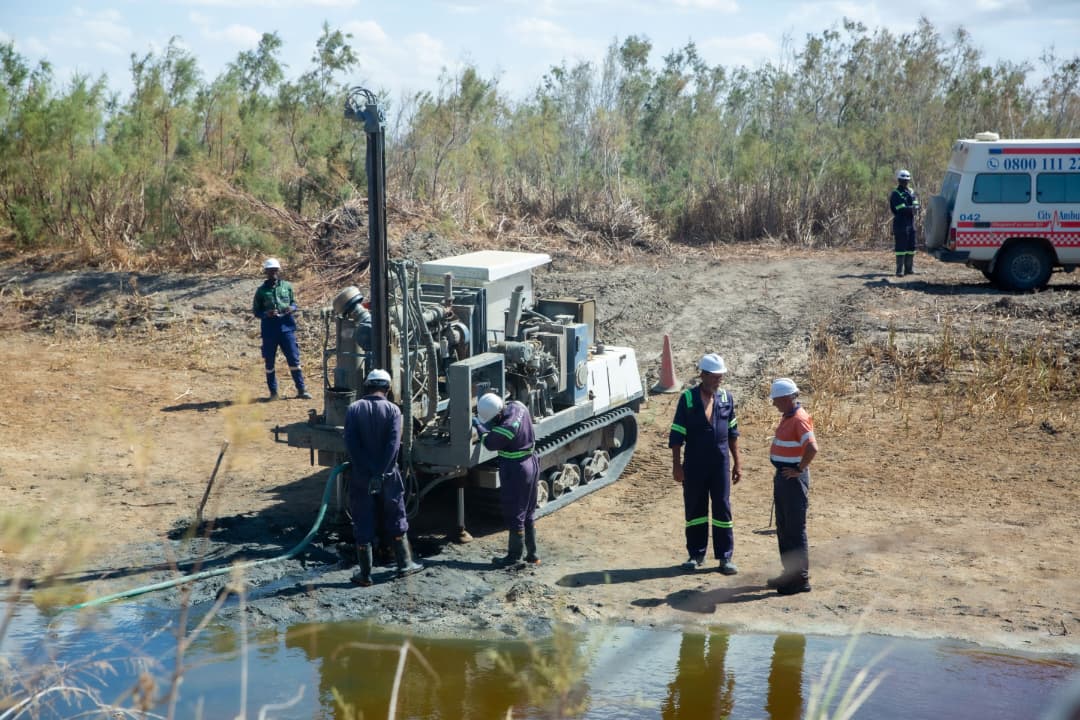The African Energy Commission (AFREC) has released the Eastern Africa Oil and Gas Market Report at Africa Oil Week 2025 in Accra, offering a data-driven roadmap to unlock oil and gas investment opportunities in Eastern Africa and strengthen Africa energy security.
The report maps reserves, identifies refining and storage shortfalls, and recommends urgent policy and infrastructure actions needed to turn discoveries into jobs, revenues and reliable fuels.
AFREC’s study finds that Eastern Africa’s hydrocarbon potential is significant but unevenly developed. To realise the promise of the Eastern Africa oil and gas market, AFREC urges governments and investors to scale upstream exploration, commercialise contingent reserves, expand refining capacity, and build cross-border pipelines under harmonised regulations measures that would reduce costly imports and boost regional value capture.
reserves vs refining capacity 
The chart highlights a stark mismatch: countries with sizable reserves like Uganda and Sudan often lack sufficient refining throughput, while some refineries remain under-utilised.
That gap forces reliance on imported refined products and lowers the region’s ability to capture downstream value, a central finding of the AFREC oil and gas report.
Top findings from the AFREC oil and gas report
- Large but fragmented resource base: Eastern Africa hosts both frontier acreage and proven discoveries (Uganda’s Albertine Graben; Tanzania’s offshore gas). However, reserves, market structures and fiscal terms vary widely across countries.
- Refining and storage shortfalls: Several nations with reserves lack meaningful refining capacity or have idle refineries, creating import dependence. AFREC prioritises upgrades, new refineries and strategic storage.
- Four priority actions: accelerate exploration, commercialise contingent resources, expand/refurbish refineries and harmonise regulatory and fiscal frameworks to attract long-term capital.
Case study- Uganda: EACOP and monetising Albertine discoveries
Uganda’s Albertine discoveries are central to the region’s upstream potential. The East African Crude Oil Pipeline (EACOP) designed to move Ugandan crude to Tanzania’s Tanga port is pivotal for monetisation.
AFREC positions EACOP as an example of how cross-border infrastructure can translate discoveries into export revenues, domestic jobs and feedstock for planned local refining capacity.
Successful EACOP implementation would unlock export markets and reduce project-level commercial risks for investors eyeing East Africa oil and gas market opportunities.
Case study -Tanzania: LNG as a game changer for gas commercialisation
Tanzania’s offshore gas and planned LNG export capacity could reshape regional gas economics. AFREC notes that concluding fiscal, local-content and contractual issues will determine whether Tanzania’s LNG projects proceed to final investment decisions and exports.
If realised, LNG development would supply domestic power, spur petrochemical opportunities, and create export revenues marking a major step toward regional energy integration under AfCFTA frameworks.
What policymakers and investors must do
AFREC’s recommendations are practical and immediate:
- Policymakers: harmonise cross-border regulations, adopt investor-friendly fiscal terms, invest in strategic refineries and storage, and implement robust environmental and social safeguards to de-risk projects.
- Investors: prioritise upstream exploration blocks, gas commercialisation projects (including LNG and domestic gas-to-power), and downstream assets such as refineries, storage terminals and pipelines to capture higher value in the Eastern Africa oil and gas market.
Voices from Africa Oil Week, Accra
Rashid Ali Abdallah, AFREC Executive Director: “Africa cannot advance its energy agenda in silos. Strong leadership and regional cooperation are essential if our resources are to deliver secure, sovereign and sustainable outcomes.
Regional ministers echoed the message, emphasising fast-tracked infrastructure (EACOP) and finalising fiscal terms for LNG projects to convert discoveries into tangible economic benefits.
Why this report matters for energy security and investment
The AFREC Eastern Africa oil and gas report links resource potential to practical policy fixes and investor signals. By highlighting where reserves exist, where refining gaps persist, and which projects can be catalysed by regional partnerships, the study provides actionable intelligence for governments, financiers and energy companies seeking to participate in Africa’s evolving energy landscape.
Also read: Africa’s Untapped Oil and Gas Potential Could Double with Enhanced Exploration
Frequently Asked Questions
- What is the Eastern Africa oil and gas market report?
The report, launched by the African Energy Commission (AFREC) at Africa Oil Week 2025 in Accra, provides a comprehensive overview of oil and gas reserves, refining gaps, and investment opportunities in Eastern Africa. It acts as a blueprint for policymakers and investors seeking to strengthen Africa’s energy security. - Why did AFREC release the report at Africa Oil Week 2025?
Africa Oil Week gathers global investors, regional policymakers, and energy leaders, making it the ideal platform to launch strategic reports. By unveiling the study in Accra, AFREC ensured maximum visibility and collaboration potential for Eastern Africa’s oil and gas sector. - Which major projects are highlighted in the report?
The report underscores Uganda’s East African Crude Oil Pipeline (EACOP) as a model for cross-border infrastructure, and Tanzania’s LNG export projects as game-changers for gas monetisation and industrial growth. Both projects are considered catalysts for regional investment. - How will the AFREC report benefit Africa’s energy security?
By pinpointing reserves, refining gaps, and cross-border integration needs, the report helps governments and investors prioritise infrastructure and policy reforms. These actions reduce import dependence, stabilise fuel supply, and support Africa’s long-term energy transition. - What are the opportunities for investors in Eastern Africa’s oil and gas sector?
Investors can tap into upstream exploration, LNG development, refinery expansion, storage terminals, and cross-border pipelines. With AFREC’s recommendations on regulatory harmonisation and fiscal terms, the region offers competitive entry points for long-term returns.



